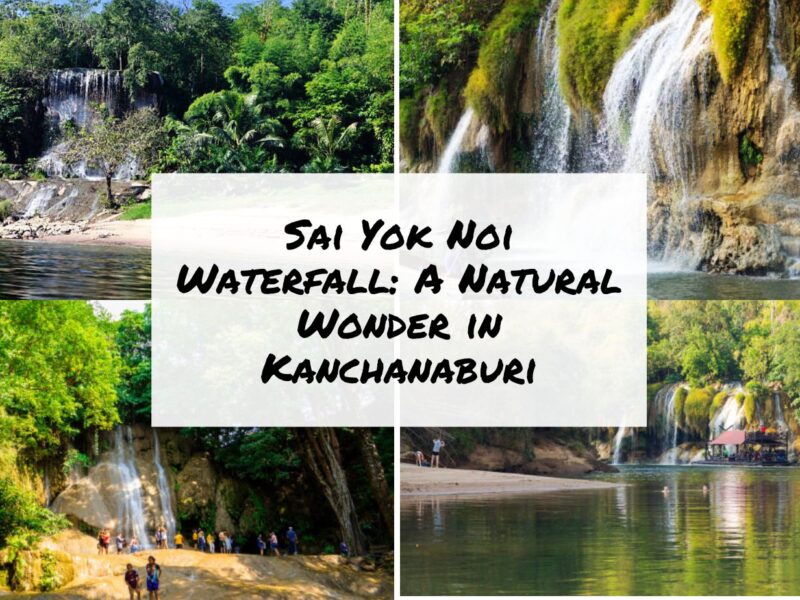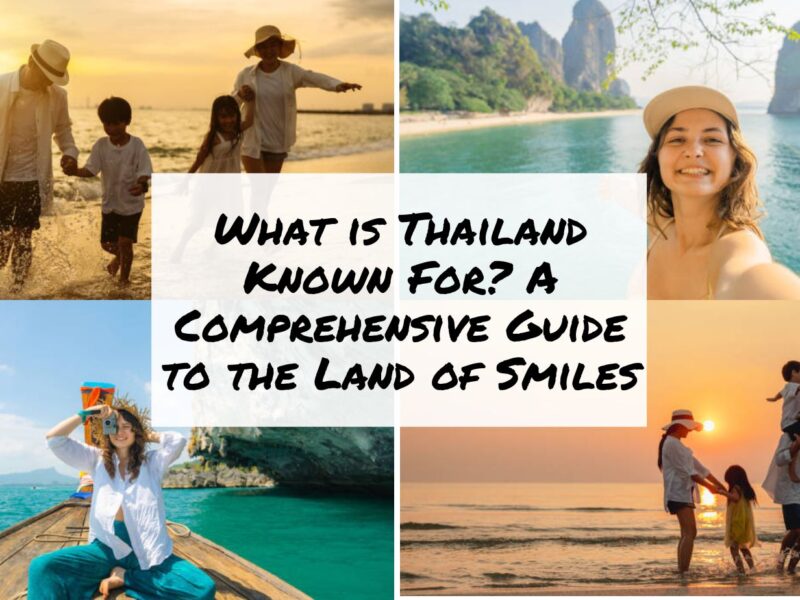It is abundantly obvious how significant Thais place on their national religion, Theravada Buddhism, given the prevalence of temples, spirit houses, and other religious buildings around the country. Religion has a significant impact on Thai people’s lives as well as on foreign visitors to the country. Here is a rundown of all you need to know about Buddhism in Thailand so that you can better understand the Thai people and what they believe.
History of Buddhism
Buddhism was established in India in the sixth century B.C. by Prince Siddhartha, who attained the supreme objective of enlightenment and was the first person to found the religion. After meditating for 49 days underneath a bodhi tree, he eventually became known as the Buddha, also known as the “Awakened One.” Buddhism eventually made its way to Thailand from its birthplace in Sri Lanka. In the 12th century, it rose to prominence as the main religion in Thailand as well as in Laos.
Buddhism in Thailand
Theravada Buddhism is the state religion of Thailand and is followed by more than 95% of the people. It is also widely practiced in neighboring countries such as Laos, Myanmar, and Cambodia. It is possible to find minute reminders of this religion even in the most inconspicuous corners of the land. During their travels, tourists will be confronted with numerous reminders of Buddhism, ranging from the imposing temples that can be found along the Chao Phraya River to the spirit homes that can be found guarding buildings and other establishments all around the country.
Many Thais’ identities are deeply entwined with Buddhism because of its central place in their culture. The majority of people will make daily offerings to places such as spirit houses. Others will occasionally provide food to the many soi dogs (street dogs) in order to accumulate merit. Many Thais think that if they perform good deeds and accumulate merit, they will enjoy longer and more fulfilled lives. Additionally, some individuals choose to safeguard themselves by wearing Buddhist amulets.
Monks in Thailand
The Land of Smiles is home to approximately 300,000 monks at the present time. Visitors will very certainly come across some of them anywhere in Thailand they go, from Phuket to Bangkok. In a sea of modern apparel, he stands out from the crowd thanks to the bright yellow and orange of his robes. A good number of Thais will begin their day by presenting offerings to the monks who are traveling from place to place in search of financial support.
Before reaching the age of 20, every young man in Thailand is expected to have spent at least some time living as a monk. Some people will just stay for one or two days, despite the fact that the average length of stay being discussed is roughly three months. The majority of monks remain for a period of at least a few weeks. Young guys engage in this activity in the hopes of accumulating merit and positive karma. Those Thais who are wealthy or have money are thought to have particularly excellent karma because of their financial situation. It is commonly held that those who are poor today did not have good karma in a previous incarnation and, as a result, they do not have any financial resources.
Read More: Useful Thailand Travel Information You Might Not Know
How to Become a Monk
When a man makes a choice to become a monk, he must go through a number of different ceremonies and procedures in order to fulfill the requirements. As an illustration, they are required to shave their heads and eyebrows, in addition to taking part in a number of rituals. They are also given responsibilities in the temple where they live on a daily basis, such as cleaning or taking in offerings first thing in the morning.
Being a monk is not an easy way of life to live. On the one hand, there are dozens of different regulations that have to be adhered to. Some are quite simple, such as the requirement that monks always wear robes, while others appear to be more challenging since they prohibit activities like consuming alcohol or swimming for recreational purposes. When they are in public, they are required to abide by a laundry list of rules and regulations. For instance, monks are not allowed to laugh or speak very loudly.
The monks are generally very welcoming to visitors, including those from other countries. There are activities available at some temples, such as monk talks, in which visitors get the opportunity to converse with monks about their daily lives. To refresh your memory, most Thais are willing to cede their seats on public transportation to a monk. This is something that tourists should also do.
Buddhist Festivals and Holidays
The dominant religion in Thailand is the focus of many of the country’s celebrations and holidays. The first of these is known as the Makha Puja. Buddhists congregate in temples and light candles during this national event, which takes place during the full moon in February.
The Wat Phra Buddhaphat fair is held annually by Buddhists around the beginning of March. The Buddha’s footprints can be found at many temples (some natural, some artificially made). The Phra Puddhabat Temple in Saraburi is home to the most well-known of all of them. During the festival, Buddhists worship the enormous footprint left by the Buddha.
As was just discussed, every young man in Thailand is expected to take monastic vows by the time he is 20 years old. Celebrations of this event occur during April and are known as the Si Satchanalai Ordinations. People participate in a parade while dressed in elaborate costumes.
Songkran is one of the most well-known Buddhist celebrations all around the world, particularly among travelers. The entire nation engages in a massive water fight, which stands as a metaphor for the cleansing of sins and the removal of ill luck accumulated over the course of the preceding year. The ritual began when people began the habit of pouring water on sculptures of Buddha.
The beginning of May is the time for the Buddhist celebration known as Visaka Puja. It is a celebration of Buddha’s birth, death, and attainment of enlightenment. Thai Buddhists will congregate with candles that are lit around the perimeter of one of the several temples that are located all across the country.
Khao Phansa, commonly known as the Buddhist Lent Day, is the day that initiates a period of three months during which monks are required to remain seated in meditation. The Buddhists come and present the stationary monks with yellow robes and candles as an act of worship.
The first sermon given by the Buddha is honoured with the Asanha Puja ceremony. Celebrations take place at temples all around the Kingdom during the month of July during the full moon.
The completion of Buddhist Lent is commemorated with a procession and beauty pageants during the Sakhon Nakhon Wax Candle Festival, which takes place in Sakhon Nakhon. A Thai celebration is not considered to be in its entirety until at least one or two candles have been lit. Another Buddhist celebration that takes place in October is called Ok Phansa, and it is during this time that new monks are given their robes. Visitors should be informed that on many of these Buddhist festivals, both the drinking of alcohol and the sale of alcohol are prohibited across the country. This is something that they should keep in mind when they are there.
Read More: How to celebrate Christmas in Thailand in 2022
There are about 30,000 Buddhist Temples in Thailand.
Wat Phra Kaew in Bangkok and Wat Phra That Doi Suthep in Chiang Mai is two of the most well-known temples, also known as wats, in the Land of Smiles. Both of these wats are located in Thailand. A significant number of Thais will celebrate Buddhist holidays in and around these remarkable works of architecture. In addition to serving as a location for religious services and community gatherings, these temples frequently provide living quarters for monks and educational facilities. There are marketplaces outside the gardens of many temples, and the Temple of the Reclining Buddha in Bangkok, which is also known as Wat Pho, even boasts a massage school on its premises.
- My Caffeinated Journey: The Top 8 Best Coffee Shops in Bangkok - September 11, 2023
- My Encounter with Thailand’s Black and White Striped Snakes - September 2, 2023
- The Koh Samui Island Tour - July 24, 2023


